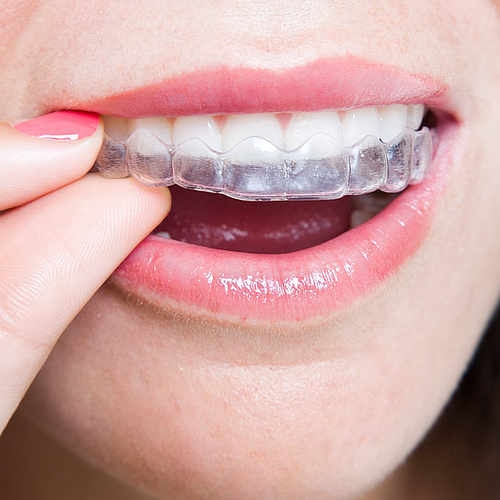JUVÉDERM® XC, ULTRA XC

JUVÉDERM® XC injectable gel is for injection into the facial tissue for the correction of moderate to severe facial wrinkles and folds, such as nasolabial folds. Over time, your skin loses elasticity and moisture, which contributes to moderate to severe parentheses lines and wrinkles around the nose and mouth. While serums and creams can help […]
BOTOX® Cosmetic

BOTOX® Cosmetic is a prescription medicine that is injected into muscles and used to temporarily improve the look of both moderate to severe crow’s feet lines and frown lines between the eyebrows in adults. BOTOX® Cosmetic targets one of the underlying causes of frown lines and crow’s feet—the repeated muscle contractions from frowning and squinting […]
Periodontal Treatment

It only takes twenty four hours for plaque that is not removed from your teeth to turn into calculus (tartar)! Daily home cleaning helps control plaque and tartar formation, but those hard to reach areas will always need special attention. Once your periodontal treatment has been completed, your dentist and dental hygienist will recommend that […]
Sleep Apnea

Sleep apnea is a potentially life-threatening sleep disorder characterized by repeated pauses in breathing during sleep. The term sleep apnea is derived from the Greek etymology meaning “without breath”. Breathing pauses can last anywhere from several seconds to minutes, and happen as often as 30 times or more per hour. Ongoing disrupted breathing causes an […]
Temporomandibular Joint Dysfunction

Temporomandibular Joint Dysfunction Syndrome (TMJ) is a common condition affecting a wide variety of people. TMJ is characterized by severe headaches, jaw pain of varying degrees, grinding teeth, and an intermittent ringing in the ears. The vast majority of TMJ sufferers are unaware that the root cause of these problems is something that a dentist […]
Cleaning & Prevention

A preventive program is a cooperative effort by the patient, dentist, and dental staff to preserve the natural dentition and supporting structures by preventing the onset, progress, and recurrence of dental diseases and conditions. Preventing dental disease starts at home with good oral hygiene and a balanced diet. It is continued in the dental office […]
Orthodontics and Aligners

Orthodontics is more commonly referred to as “braces,” but this simple term can be misleading, as the science of orthodontics is actually quite precise. Orthodontists are experts not only in the current position of teeth, but also in what has caused them to arrive at their current positions and what future movement is possible. Your […]
Teeth Whitening

Most teeth can be whitened (some call it bleaching) and there are a number of ways to whiten teeth. External tooth whitening happens when vital teeth are bleached by direct contact with a safe and commonly used whitening agent, either in a dental office or at home. This means that in most situations, tooth whitening […]
Tooth-Colored Fillings

Dentists no longer need to rely on unsightly metals to replace tooth structure lost to decay, but use high density, state-of-the-art plastic (composite resins) and porcelain materials instead. These materials more naturally mimic the look, feel, and function of natural teeth and actually bond directly to the remaining enamel and dentin. This means that new […]
Porcelain Veneers

Porcelain veneers are thin pieces of porcelain used to recreate the natural look of teeth, while also providing strength and resilience comparable to natural tooth enamel. It is often the material of choice for those looking to make slight position alterations, or to change tooth shape, size, and/or color. VENEER CONSULTATION Visiting our office and […]
Porcelain Bridge

There are different ways to replace missing or damaged teeth, so a dental health professional should be contacted if this is a problem you are facing. Your teeth will carefully be examined and the right course of treatment will be pursued. If you think a porcelain bridge is an avenue you want to explore, be […]
Dentures

While dentures have been considered a tried and true method for tooth replacement for years, they come with their own set of issues. The main problem is that dentures rest on teeth and gums for stability, which can encourage bone loss, tooth decay, and periodontal disease. However, dentures can be relined every few years to […]
Cosmetic Bonding

Bonding is a popular treatment option because it provides a successful attachment between the filling material and the tooth’s original enamel and dentin. It looks like the original tooth and functions like it as well. Direct composite bonding is used to recreate a smile in an additive manner, where little or no tooth reduction is […]
Porcelain Crowns

Dental porcelain can be sculpted to closely replicate the look of natural tooth enamel, while providing desirable strength and resilience. Porcelain crowns are an excellent choice when recreating the form and function of a damaged tooth, because a crown basically replaces the entire external portion of the tooth down to the gum level. Crowns are […]
Dental Implants & Roots

Dental Implants & Roots The key benefit of dental implants over other tooth replacement systems is that an implant connects directly to the jaw bone. It’s obviously not the same as the original connection, but functions just the same. When a tooth is lost, bone loss will eventually occur in that region because the root […]


